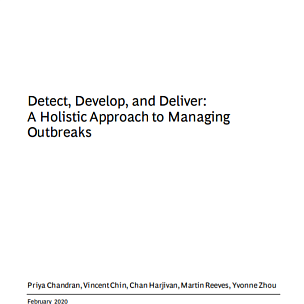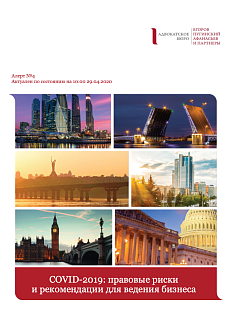The current situation:
While a wave of new COVID-19 infections from the Omicron variant is sweeping the globe, hope is on the horizon. Our models show that by March 2022, the wave will have passed through most of the world, and this will lead to a period of low transmission. From there, COVID-19 will become a recurrent disease that health systems and societies will have to manage, re-emerging periodically during winter months and as immunity wanes.
Thankfully, we are now far better equipped to limit the impact of future waves than we were at the beginning of the pandemic. For instance:
- Broad previous exposure to the virus and vaccines will make it harder for future waves to gain a foothold.
- We have the technology to rapidly adapt vaccines to new variants.
- We can now treat those infected with effective antivirals.
- We know that high-quality masks and physical distancing work, and we can use them to protect the vulnerable in future waves.
Our reasons for hope are based on the following data and observations:
Unprecedented global Infections, increasing vaccination and immunity.
On January 17, 2022, there were an estimated 125 million infections per day across the globe, 10 times the peak of the Delta wave in April 2021. This unprecedented level of infection suggests that more than 50% of the world will have contracted Omicron by March 2022. The consequent high levels of infection-acquired immunity, along with continued increases in vaccination, mean that for some time, global levels of COVID-19 immunity should be at an all-time high. We therefore expect low levels of virus transmission for the ensuing weeks or months. As of January 17, Omicron waves were peaking in 25 countries in five WHO regions and 19 states in the USA, while only a few countries in Eastern Europe, North Africa, Southeast Asia, and Oceania have yet to start their Omicron wave. We expect the Omicron peak to occur in most countries between mid-January and mid-February, with later peaks in those countries where the Omicron wave has not yet started.
Asymptomatic infections and decreased severity.
Evidence suggests that the proportion of asymptomatic infections is between 80% and 90% for Omicron, and the global infection-detection rate has declined from 20% to 5%. While our models indicate that global daily infections have increased 30-fold between November 2021 and January 2022, reported cases have only increased six-fold during this same period. US data shows that the ratio of hospitalizations to cases has declined by 50% compared to various peaks, and in Canada and South Africa, the proportion of hospitalized patients who require intubation or are dying has declined by as much as 8090%.
Effective strategies.
While mask use and vaccination will still protect individuals from COVID-19, the speed of the Omicron wave is so fast that additional policy actions will have an insignificant effect on the global course in the next 46 weeks: by the time these interventions scale up, the Omicron wave will be largely over. Increasing testing is likely to increase social disruption by excluding more individuals from work or school but is unlikely to impact the wave; contact tracing appears ineffective; and Omicrons high transmissibility makes zero-COVID-19 strategies unlikely to succeed. In light of the preceding, control strategies need to be reset. However, this does not mean COVID-19 is gone for good; it will become another recurrent disease that health systems and societies will manage through strategies that have proven effective over the course of the pandemic, including:
- Improving vaccine access and investing in new versions of vaccines.
- Improving surveillance for emerging variants.
- Utilizing masking and physical distancing as needed during future waves when immunity wanes or transmission increases during winter months.
The era of extraordinary measures by governments and societies to control transmission of a new pathogen will soon be over, and COVID-19 will become another recurrent disease that health systems and societies will have to manage.
Estimated percentage of the population infected with COVID-19 up to January 10, 2022
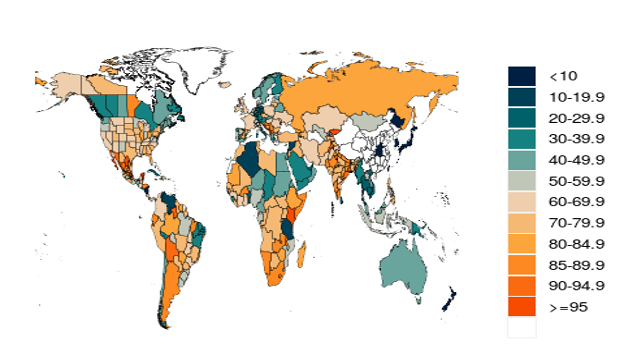
Rates of infection vary across the globe with most of locations showing percentages above 60%.
Estimated percent of new infections that are Omicron variant
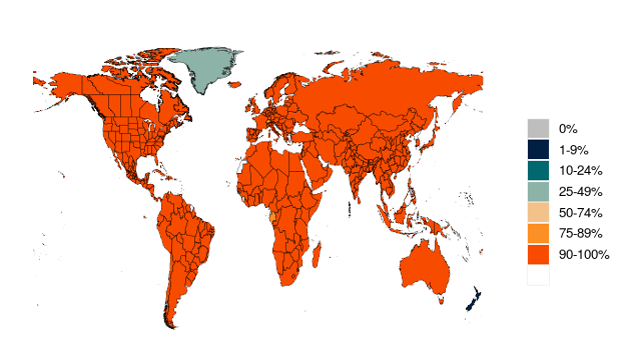
The Omicron variant has spread rapidly across the globe, and we estimate that it is now dominant in nearly all countries.
Infection-fatality rate on January 10, 2022
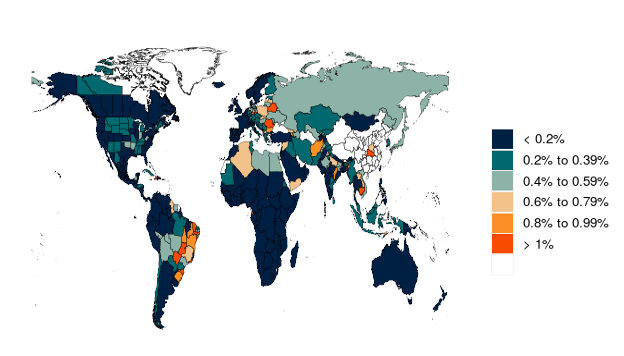
The Infection-fatality rate (IFR) is estimated as the ratio of COVID-19 deaths to estimated daily COVID-19 infections. The IFR is less than 0.4 across the globe.
Global daily reported cases until May 1, 2022
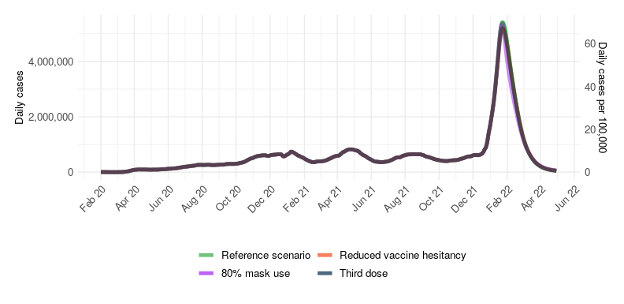
Daily reported cases globally will peak in January 2022 and then decline steadily thereafter.
Source: IHME



